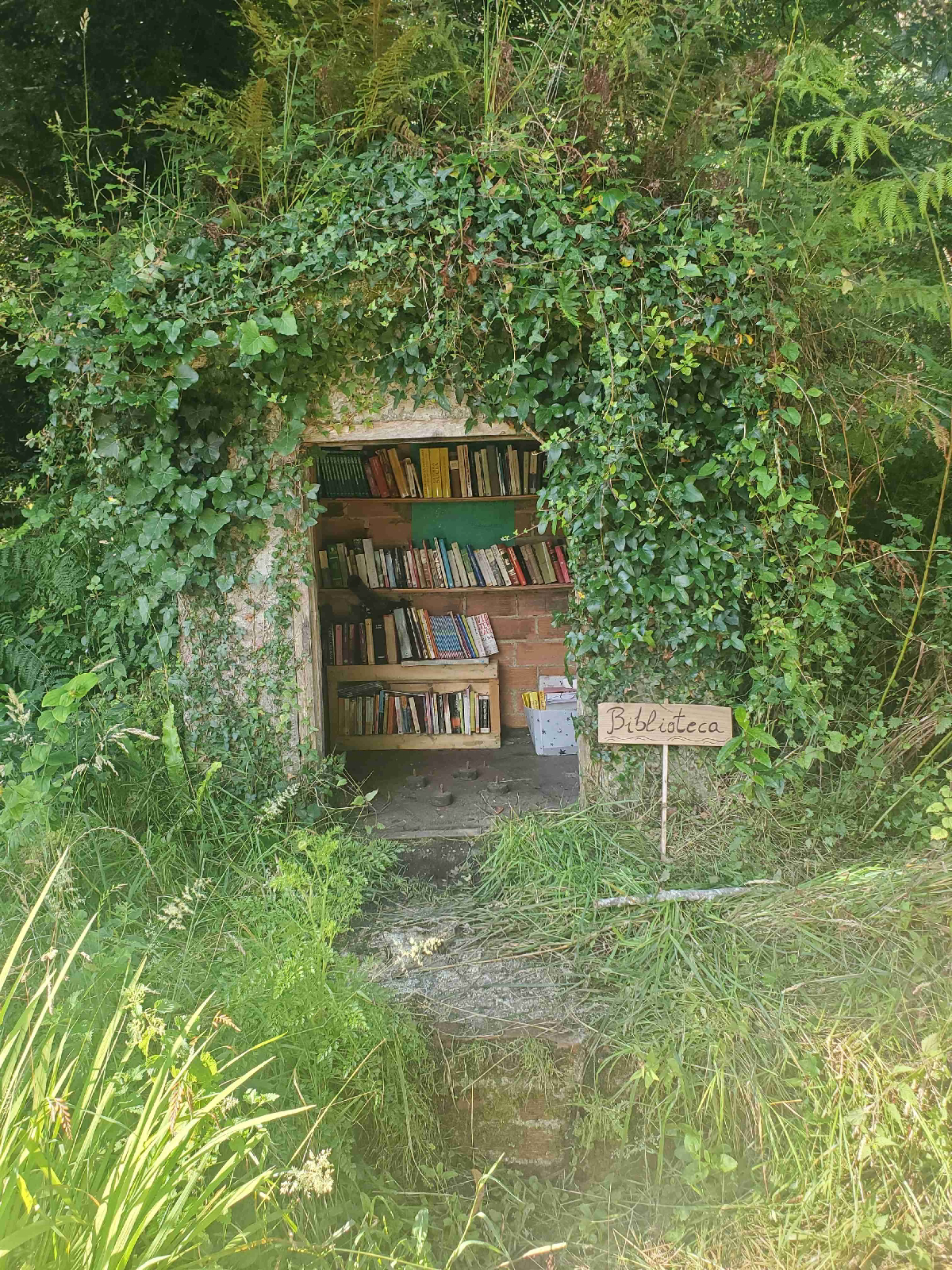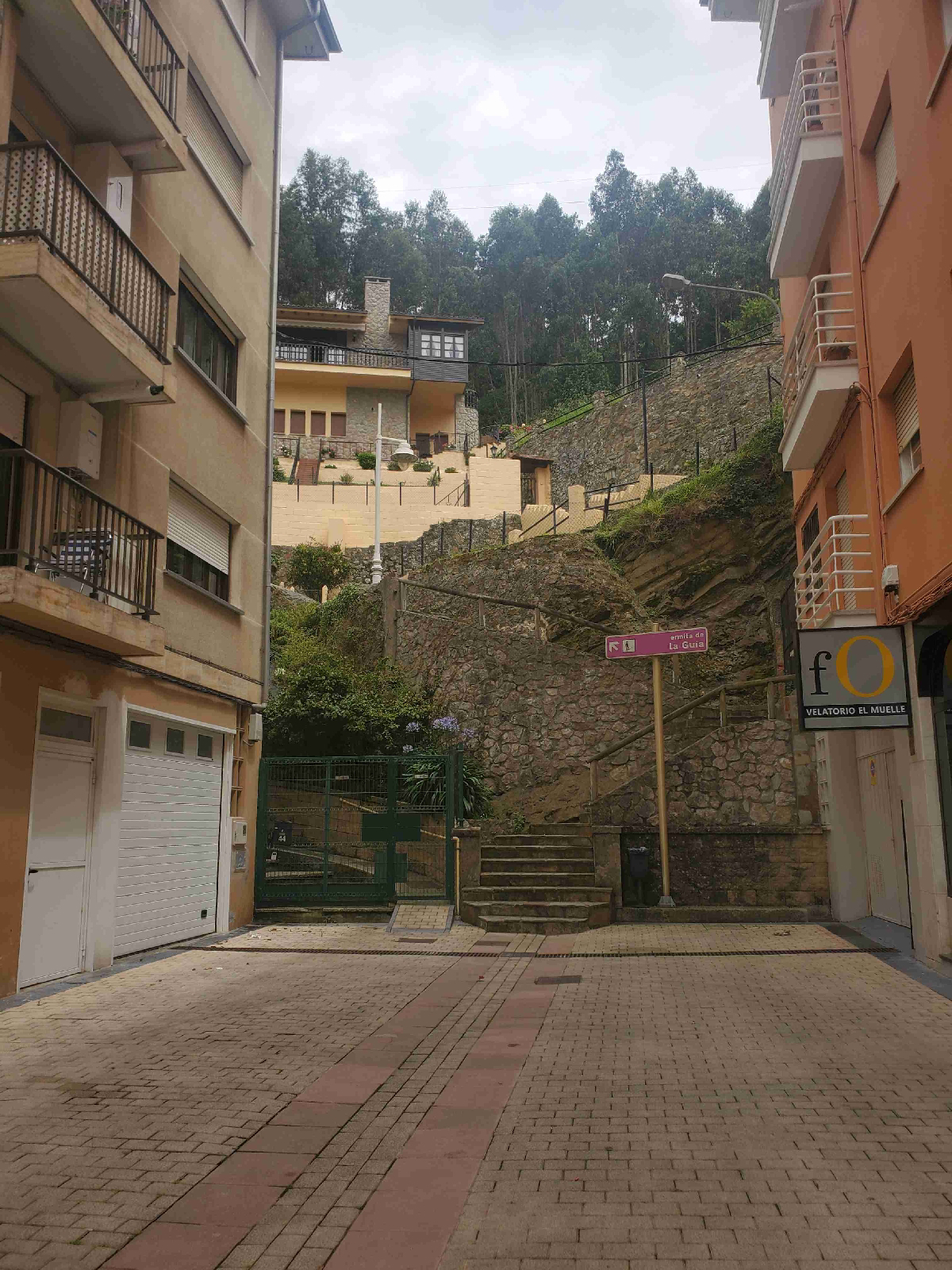By the time we emerged from our tent, the rain had ceased, leaving the ground damp but the air fresh. We packed up swiftly, setting out along the precarious, shoulderless highway that would be our path for the first 300 meters. As we walked, the occasional vehicle whizzed by, a reminder of the narrow margin for error. At one point, a bus passed us, and we stepped aside just in time. In the final five meters of the highway, Psycho paused to capture a photo. It was at that moment a car, attempting to overtake another, sped past us at an alarming speed, no more than two feet away. We were certain the driver hadn’t seen us when he decided to pass. We exhaled in relief as we stepped onto a gravel road leading us towards the ocean.
The gravel road meandered through small villages and seaside resorts, each with its own charm. Our first hope for a morning café con leche was dashed when the café turned us away, catering exclusively to hotel guests. Other stops along the way were similarly closed, the early hour keeping their doors shut.
After covering 6.9 miles, we arrived at a BBQ restaurant that opened just a minute before we got there. It was a welcome sight. We settled at a picnic table, ordering three coffees between the two of us. The soothing strains of jazz music played in the background as we mapped out the rest of our day, savoring each sip and moment of respite.
Refreshed, we walked another two miles to Nueva, where we purchased a hydrating beverage and a banana. Sitting outside in the shade, we took our time to hydrate and recharge. The ridgeline of the mountainous hills to the south seemed to edge closer as we continued our hike. These hills were a reminder of the Camino Primitivo, another leg of our journey that awaited us in the coming days.
An hour later, we found ourselves resting in the shade of a church in Cuerres, beside a pilgrims’ fountain and a small park. The church, with its simple yet charming architecture, provided a peaceful backdrop as we paused to rest our feet and enjoy the cool shade and tranquility.
The desire to reach Ribadesella and the promise of a shower propelled us forward for the remainder of the walk. We put in our headphones to carry us through the final stretch. The path transformed into a narrow dirt road, flanked by farms and orchards, with barely any traffic to disturb the peace. The final descent into Ribadesella was steep, but the sight of the old city made it worthwhile.
Ribadesella, with its layers of interwoven buildings at varying levels, was a sight to behold. However, the intricate layout meant navigating a seemingly endless series of stairs. We climbed down only to climb back up, finally reaching our accommodation for the night.
Once settled in, we luxuriated in the showers, washing away the sweat and dust of the day. Refreshed, we headed to a nearby grocery store to gather supplies for our customary in-room dinner. Despite the morning’s rain, we had managed to stay dry for the most part, contending with muggy air in the afternoon. We hoped our luck would hold for the following day.
Ribadesella is a town steeped in history, with roots stretching back to the Paleolithic era. The Cuevas de Tito Bustillo, located nearby, is a testament to this, housing some of the most significant prehistoric cave paintings in Spain. We did not visit this sight, as it is closed to visitors in july, and we are tired.
The town’s port serves as a reminder of its past. Ribadesella played a crucial role in the maritime trade between the 16th and 18th centuries, its ships navigating the treacherous waters of the Cantabrian Sea. Today, the port is a picturesque spot, perfect for an evening stroll to the grocery store.
The old quarter, with its narrow, winding streets and historic buildings, offered a glimpse into Ribadesella’s past. The Church of Santa María Magdalena was built in the early 20th century on the remains of an old medieval church. Psycho commented that the city was too dense for a 20th century church to be built at the center of old Town, but this piece of gistory makes sense. It was almost completely destroyed during the Spanish Civil War in 1936 but was subsequently rebuilt.
Tomorrow, again we walk.







No comments:
Post a Comment